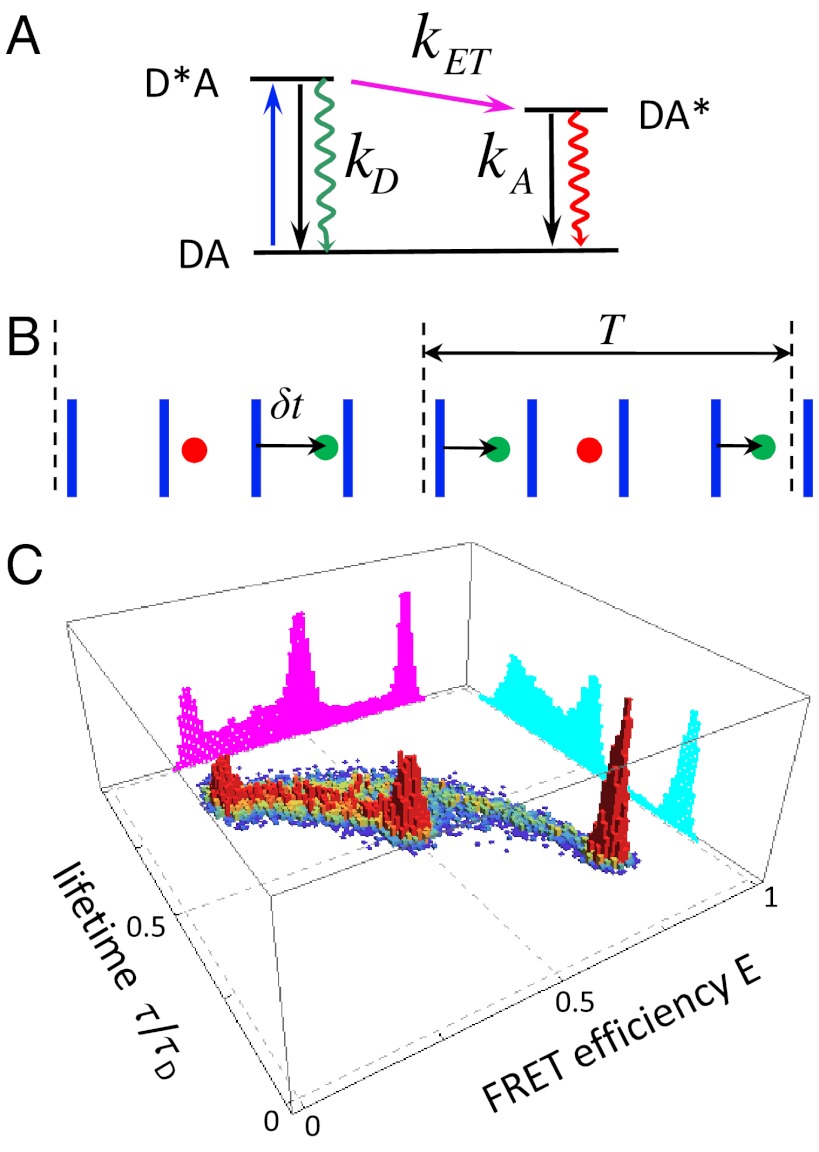Fig. 1.
(A) The simplest kinetic scheme for FRET. A donor is excited by a laser pulse (blue arrow). The excited state can decay radiatively (green wiggly arrow) or nonradiatively (black arrow) with a combined rate kD or the excitation can be transferred to the acceptor with rate kET. The acceptor can decay by emitting a photon or nonradiatively with a combined rate kA. (B) A schematic representation (not to scale) of the sequence of donor (green) and acceptor (red) photons detected after excitation by a train of laser pulses (blue). For each donor photon, the time δt between laser pulse and the photon (delay time) is recorded. The photon sequence is divided into bins of duration T. (C) Simulated two-dimensional histogram of FRET efficiencies (E) and relative donor lifetimes (τ/τD, where τD = 1/kD) for a three-state system. The magenta and cyan histograms are the FRET efficiency and donor lifetime histograms, respectively.

